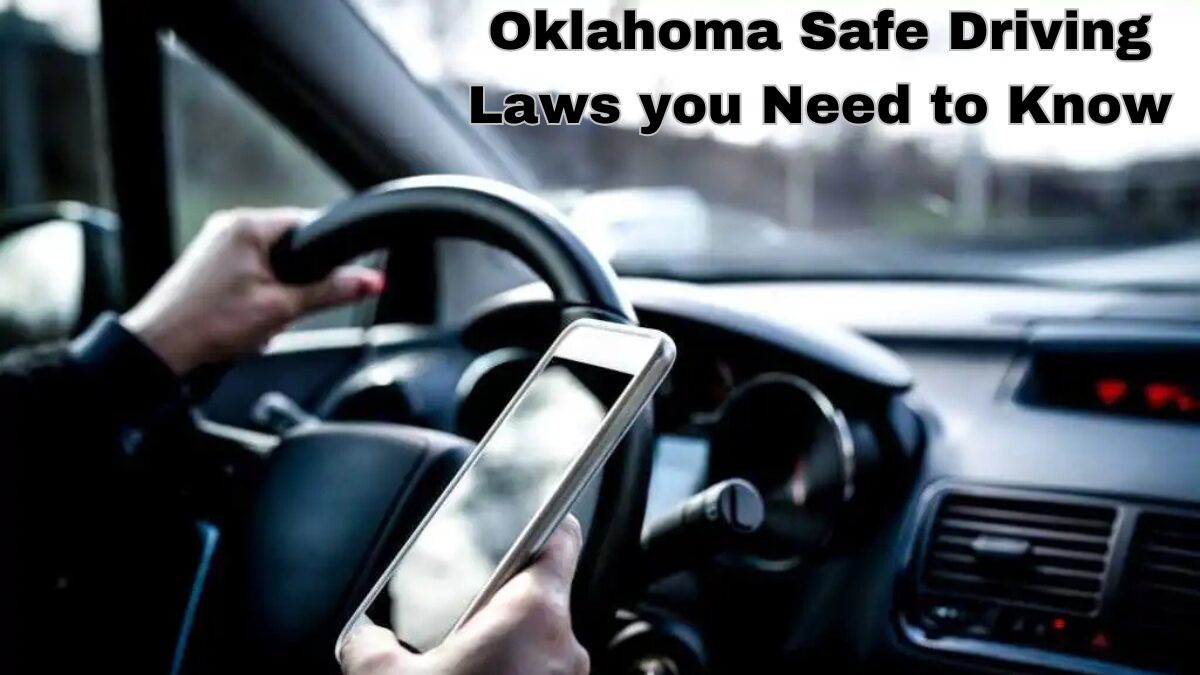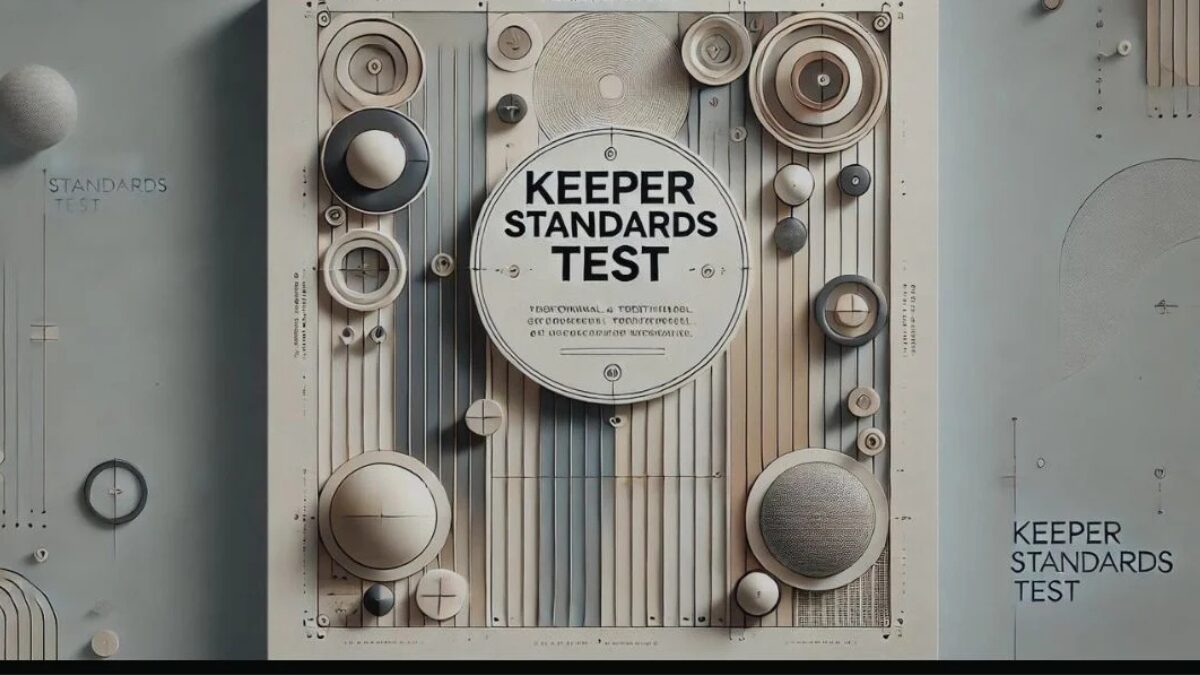Education
The C.W. Park USC Lawsuit: A Comprehensive Overview

Introduction
The lawsuit involving C.W. Park and the University of Southern California (USC) has become a focal point of discussion in academic and legal circles. This high-profile case not only sheds light on the specific grievances of C.W. Park but also underscores broader issues within academic institutions. Understanding the intricacies of this lawsuit is crucial, as its outcome could set significant precedents for universities nationwide.
Background Information
Who is C.W. Park?
C.W. Park is a distinguished professor renowned for his contributions to marketing and business education. His association with USC has been marked by numerous accolades and a robust academic reputation. However, recent events have cast a shadow over this illustrious career.
Overview of USC (University of Southern California)
USC is one of the leading private research universities in the United States, known for its strong academic programs and influential alumni network. Located in Los Angeles, USC has a storied history and plays a significant role in higher education.
Details of the Lawsuit
When Did the Lawsuit Start?
The lawsuit was filed in [insert year], capturing immediate attention due to the high-profile nature of the parties involved.
Key Allegations Made by C.W. Park
C.W. Park alleges that USC engaged in actions that were detrimental to his career and violated his rights as an academic professional. These allegations range from [specific claims such as discrimination, breach of contract, etc.].
USC’s Response to the Lawsuit
USC has firmly denied the allegations, asserting that they have adhered to all legal and ethical standards. The university’s legal team has been actively working to counter the claims made by Park.
Legal Grounds
Basis of C.W. Park’s Claims
Park’s lawsuit is grounded in several legal principles, including [insert specific legal grounds such as employment law, discrimination statutes, breach of contract, etc.]. These principles are critical in understanding the potential merit of his case.
Legal Principles Involved
The lawsuit touches on key legal concepts such as academic freedom, employment rights, and contractual obligations. Each of these elements plays a pivotal role in the proceedings.
Implications for Academic Institutions
How This Lawsuit Affects Other Universities
The outcome of this lawsuit could have far-reaching consequences for academic institutions across the country. Universities may need to re-evaluate their policies and practices to ensure they are not vulnerable to similar legal challenges.
Potential Changes in University Policies
If Park’s allegations are upheld, universities might implement stricter guidelines regarding faculty rights and institutional obligations. This could lead to widespread policy reforms in higher education.
Public Reaction
Media Coverage
The lawsuit has garnered extensive media coverage, with numerous outlets providing detailed accounts of the proceedings. This coverage has amplified the public’s interest and scrutiny.
Opinions from Legal Experts
Legal experts have weighed in on the case, offering a variety of perspectives on its potential outcomes and implications. These expert opinions add depth to the public discourse surrounding the lawsuit.
Public Opinion and Social Media Reactions
Public opinion is divided, with some supporting C.W. Park and others siding with USC. Social media platforms have become battlegrounds for these differing viewpoints, reflecting the polarized nature of the issue.
C.W. Park’s Perspective
Statements from C.W. Park
Park has been vocal about his reasons for filing the lawsuit, citing [specific grievances and goals]. His statements provide insight into his motivations and the personal impact of the alleged actions by USC.
Motives Behind Filing the Lawsuit
Beyond seeking legal redress, Park aims to [insert goals such as raise awareness, initiate policy changes, etc.]. Understanding these motives helps contextualize the lawsuit within broader societal and academic issues.
USC’s Perspective
Official Statements from USC
USC has issued several official statements, emphasizing their commitment to fair practices and defending their actions. These statements are crucial in understanding the university’s stance and legal strategy.
Defensive Strategies
USC’s legal team has outlined a robust defense, focusing on [specific arguments and evidence presented]. These strategies are designed to counteract Park’s allegations and protect the university’s reputation.
Court Proceedings
Key Developments in the Courtroom
The courtroom has seen significant developments, including [insert key events such as witness testimonies, evidence submissions, etc.]. These developments are pivotal in shaping the direction of the case.
Important Dates and Milestones
Several critical dates have marked the lawsuit’s progression, from initial filings to pre-trial motions. Tracking these milestones helps in understanding the lawsuit’s trajectory.
Outcome and Verdict
Current Status of the Lawsuit
As of now, the lawsuit is [insert current status]. This status determines the immediate next steps and potential timelines for a resolution.
Potential Outcomes and Their Implications
The lawsuit could result in several potential outcomes, each with its own set of implications for both C.W. Park and USC. These outcomes range from [insert possible verdicts and consequences].
Impact on C.W. Park’s Career
How the Lawsuit Has Affected C.W. Park Professionally
The lawsuit has undoubtedly impacted Park’s career, influencing his professional reputation and opportunities. Understanding these effects is crucial in assessing the personal cost of the legal battle.
Future Career Prospects
Despite the challenges, Park’s expertise and reputation may still offer opportunities for future engagements in academia or industry. His career trajectory post-lawsuit will be a key area of interest.
Impact on USC
Immediate Impacts on USC’s Reputation
The lawsuit has had immediate repercussions for USC’s public image, affecting stakeholder trust and institutional credibility.
Long-term Consequences for the University
Beyond the immediate fallout, the long-term consequences could include policy changes, financial implications, and shifts in university governance.
Lessons Learned
What Other Institutions Can Learn from This Lawsuit
This lawsuit serves as a cautionary tale for other academic institutions, highlighting the importance of [insert key lessons such as transparency, fair practices, etc.].
Preventative Measures for the Future
Universities can adopt several preventative measures to avoid similar lawsuits, including [insert specific recommendations such as policy revisions, enhanced communication channels, etc.].
Conclusion
The C.W. Park USC lawsuit is more than just a legal battle; it is a reflection of broader systemic issues within academic institutions. Its outcome could reshape policies, influence future legal cases, and alter the dynamics between faculty and administration. As we await the final verdict, the lessons learned from this case will undoubtedly resonate across the higher education landscape.
Education
Oklahoma Safe Driving Laws you Need to Know

Oklahoma drivers take risks each time they get on the road. Fortunately, the state’s legislature has enacted several laws that keep the public safe. The following are some of Oklahoma’s safe driving laws.
No Distracted Driving
Distracted driving is any activity that takes the driver’s attention away from the road. Shifting focus on something else can be dangerous even if the driver only does it for fewer than 10 seconds. Not only does distracted driving increase the risk of a collision, but the driver may be forced to make a sudden maneuver that may violate other traffic laws. For example, a driver who is distracted may miss a red light and be forced to illegally proceed through the intersection. Examples of distracted driving include:
- Eating
- Drinking
- Texting
- Talking on the phone
- Focusing on other people in the vehicle
Moving Over for Emergency Vehicles
Oklahoma law requires drivers to change lanes when they see a vehicle with flashing lights on the side of the highway. If moving over is physically impossible, drivers are required to slow down. The objective of the “Move Over” law is to protect emergency workers, maintenance crews, and people who are on the side of the road receiving assistance. Drivers who violate the law may face fines from $1,000 for a first offense to $2,500 for second-time offenders.
Required Protective Gear for Motorcyclists
Motorcyclists in Oklahoma are only required by law to wear a helmet if they are younger than 18. However, state law does require all motorcycle riders to use eye protection. Motorcycle owners have options when it comes to complying with law. Eye protection can be goggles, glasses, or a windscreen on the motorcycle. Other motorcycle safety requirements restrict the height of motorcycle handlebars to being no higher than eye level. The state also requires every motorcycle to be equipped with a compliant horn.
Yielding the Left Lane
A unique law that many other states do not have is Oklahoma’s Left-Lane Law. The statute limits use of the left lane to drivers who want to make a pass to overtake another vehicle and vehicles that have to change lanes to avoid construction and emergency vehicles. Drivers may also use the left lane if traffic conditions create the necessity to change lanes.
Following Oklahoma’s safety laws significantly reduces the likelihood of drivers becoming involved in an accident. Beyond improving road safety, traffic laws reduce congestion and eases the daily commute for drivers, motorcyclists, truckers, and pedestrians.
Education
Florida Distracted Driving Laws

States across the U.S. compete with one another to impose the stiffest penalties on those apprehended for driving under the influence (DUI) or driving while intoxicated (DWI). Rightly so, given the 13,000 to 14,000 deaths annually that can be attributed to drunk driving. Yet these tough sanctions beg the question: what is the point of being sober if the driver’s attention is not on the road in any case? States like Florida have considered this subject and answer with stern legal discipline for distracted driving. After all, a driver in full possession of wits is nonetheless a danger when the mind is inattentive.
While distracted driving is rooted in varied sources, the law in the Sunshine State applies to specific behaviors that give solid evidence to the charge of distraction. In passing provisions against distracted diving, the state legislature understood that there were three categories of diversion from responsible automobile operation.
- Manual distraction: When the driver removes hands from the steering wheel to perform another task.
- Visual distraction: When the driver directs sight to something other than the road and surrounding traffic.
- Cognitive distraction: When the mind is pre-occupied and absent from the moment.
The “Put It Down” Law
The Wireless Communications While Driving Law passed in 2019. It stipulates, among other things:
- Drivers are forbidden to type into a wireless device while the vehicle is in motion.
- Drivers may not read texts or emails on any device while the car or truck is in motion.
- Law enforcement officers are directed to apprehend and cite drivers who are seen doing the above.
This law covers acts of cognitive, manual and visual distraction which must be testified to by the intercepting officer. Texting and emailing from a smartphone, android or other handheld device are two of the most common practices that embrace all three categories. Drivers caught violating the texting while driving law can receive increasing fines and points on their driver’s license that could lead to a suspension.
Exceptional Circumstances
There are exemptions from this law for certain persons and under certain conditions.
- Emergency services personnel and first responders — in the course of their official duties — need to remain in immediate touch with one another and with those who need assistance.
- Drivers who observe potentially dangerous or criminal acts can notify the police with mobile devices.
- Drivers may consult their devices for GPS and navigation assistance.
- Drivers can make voice-activated hands-free calls with their devices.
- Drivers may text and email while riding in a self-driving automobile.
Other Forms of Distracted Driving
Governments can pass statutes relating to cell phones and electronic devices because such behavior is visible and verifiable. Yet there are other distractions that also impact dedicated attention to the road. Children in the back seat; eating while driving; “rubbernecking” at other drivers or accidents; self-grooming; finding a radio station; and managing an unsecured dog or cat can all demand the driver’s concentration to the detriment of safe driving.
Education
Raise Your Game with the Keeper Standards Test

In the fast-paced world of soccer, goalkeepers are the unsung heroes who often hold the fate of a match in their hands. While strikers and midfielders may bask in the limelight, it’s the goalkeepers who bear the weight of the team’s defense. But how do we ensure that these pivotal players meet the necessary standards? Welcome to the world of the Keeper Standards Test—a comprehensive benchmark designed to evaluate and enhance the skills of goalkeepers.
A Brief History of Goalkeeping
The role of the goalkeeper has evolved significantly over the years. Early on in soccer history, goalkeepers were mainly responsible for stopping shots. However, as the game became more sophisticated, their role expanded. Modern goalkeepers must not only excel in shot-stopping but also possess excellent footwork, communication skills, and the ability to read the game. This evolution has paved the way for formalized testing methods to ensure keepers are up to scratch.
In the earlier days, goalkeepers relied heavily on instinct and raw talent. With limited specialized training techniques, many relied on natural ability and experience gained from match play. The advent of coaching methodologies and advanced training tools brought about a shift towards a more structured approach. The introduction of the Keeper Standards Test has become an essential tool in setting benchmarks for aspiring goalkeepers.
Today, goalkeepers are often the most analyzed and scrutinized players on the pitch. With the Keeper Standards Test, clubs and academies have a reliable method to assess where their keepers stand and identify areas of improvement. This makes it a crucial part of the developmental process for goalkeepers at all levels.
What is the Keeper Standards Test?
The Keeper Standards Test is a comprehensive evaluation encompassing various aspects of goalkeeping performance. It assesses technical skills, physical fitness, cognitive ability, and mental resilience. By providing a structured framework, the test helps identify strengths and weaknesses, allowing for targeted training and development.
The test is divided into several key components, each designed to measure specific aspects of goalkeeping. These components range from basic shot-stopping techniques to advanced game-reading abilities. By breaking down the role into these elements, the Keeper Standards Test provides a holistic view of a goalkeeper’s capabilities.
One of the unique features of the Keeper Standards Test is its adaptability. Whether you’re a beginner or a seasoned professional, the test can be tailored to suit your level. This flexibility ensures that it remains relevant across various levels of play, making it a valuable tool for coaches and players alike.
Importance of Setting Standards
Setting standards in goalkeeping is essential for several reasons. First and foremost, it provides a clear benchmark for performance. By establishing what is expected, goalkeepers have a target to aim for, which can drive motivation and improvement.
Secondly, clear standards help coaches and trainers identify areas of weakness. With a structured evaluation process, it’s easier to pinpoint specific skills that need attention. This targeted approach allows for more efficient training, leading to better results on the field.
Finally, setting standards promotes consistency across different levels of play. From youth teams to professional clubs, having a uniform standard ensures that goalkeepers are evaluated fairly and accurately. This consistency is crucial for maintaining the quality of goalkeeping talent across the board.
Breaking Down the Test
The Keeper Standards Test can be broken down into several key components. Each section focuses on a different aspect of goalkeeping, ensuring a comprehensive evaluation. Let’s take a closer look at what each component entails.
Technical Skills
Technical skills form the foundation of a goalkeeper’s performance. This section of the test evaluates essential skills such as shot-stopping, handling, and distribution. By assessing these abilities, coaches can ensure that their goalkeepers possess the fundamental skills needed to excel.
Shot-stopping is often the most critical aspect of goalkeeping, and this section of the test places a heavy emphasis on it. Goalkeepers are assessed on their ability to make saves from various angles and distances, ensuring they are well-rounded in this crucial area.
Distribution, while not always associated with goalkeeping, is becoming increasingly important. The Keeper Standards Test evaluates a goalkeeper’s distribution accuracy, ensuring they can effectively start attacks and relieve pressure on their team.
Physical Fitness
Physical fitness is another critical component of the Keeper Standards Test. Goalkeeping requires strength, agility, and endurance, all of which are assessed in this section. By evaluating these physical attributes, the test ensures that goalkeepers are physically prepared for the demands of a match.
Endurance testing is a key part of this section, as goalkeepers must remain alert and focused throughout the entire game. This component assesses their ability to maintain performance levels over an extended period, which is crucial for success on the field.
Agility is also a significant focus. Goalkeepers are tested on their ability to move quickly and efficiently, ensuring they can respond to shots and crosses with speed and precision. This aspect of the test highlights the importance of agility training for aspiring goalkeepers.
Cognitive Ability
Cognitive ability is a crucial aspect of modern goalkeeping. The Keeper Standards Test assesses a goalkeeper’s decision-making, reaction time, and game-reading skills. By evaluating these cognitive attributes, the test ensures that goalkeepers can think quickly under pressure.
Decision-making is perhaps the most critical aspect of this section. Goalkeepers are constantly faced with split-second decisions that can determine the outcome of a match. This component assesses their ability to make the right call in high-pressure situations.
Reaction time is another key focus. Goalkeepers must be able to react quickly to shots and changes in play, and this aspect of the test measures their ability to do so effectively. Quick reflexes are essential for success between the posts.
Mental Resilience
Mental resilience is often overlooked but is a vital component of a successful goalkeeper. The Keeper Standards Test assesses a goalkeeper’s mental toughness, concentration, and ability to bounce back from setbacks.
Concentration is crucial for goalkeepers, as they must remain focused throughout the entire game. This aspect of the test evaluates their ability to maintain concentration, even under pressure.
Mental toughness is another key focus. The test assesses a goalkeeper’s ability to handle adversity and stay composed in challenging situations. This resilience is essential for success in the high-pressure world of goalkeeping.
Key Benefits of the Keeper Standards Test
The Keeper Standards Test offers several benefits for goalkeepers and coaches alike. First and foremost, it provides a clear and structured framework for evaluating performance. This clarity allows for targeted training and development, leading to improved results on the field.
Secondly, the test promotes consistency across different levels of play. With a standardized evaluation process, goalkeepers are assessed fairly and accurately, ensuring a level playing field for all.
Finally, the test helps identify areas of strength and weakness. By pinpointing specific skills that need attention, coaches can create tailored training programs that address individual needs. This targeted approach leads to more efficient training and better outcomes.
How to Prepare for the Test
Preparing for the Keeper Standards Test requires a comprehensive approach. Goalkeepers should focus on developing both their technical skills and physical attributes. By training in these areas, they can ensure they are well-prepared for the demands of the test.
Technical skills should be honed through regular practice and drills. Goalkeepers should focus on improving their shot-stopping, handling, and distribution, ensuring they have the fundamental skills needed to excel.
Physical fitness is another essential area of focus. Goalkeepers should engage in regular fitness training to improve their strength, agility, and endurance. This preparation will ensure they are physically ready for the demands of the test.
The Role of Coaches and Trainers
Coaches and trainers play a crucial role in the Keeper Standards Test. They are responsible for evaluating goalkeepers, identifying areas of improvement, and creating targeted training programs. By providing guidance and support, coaches can help their goalkeepers reach their full potential.
Trainers should focus on developing comprehensive training plans that address both technical skills and physical fitness. By creating tailored programs, they can ensure that goalkeepers are well-prepared for the demands of the test.
Coaches should also provide regular feedback and support. By offering constructive criticism and encouragement, they can help goalkeepers build confidence and improve their performance.
Conclusion
The Keeper Standards Test is an essential tool for evaluating and developing goalkeepers. By providing a structured framework for assessment, it ensures that goalkeepers possess the necessary skills and attributes to excel on the field. Whether you’re a goalkeeper or a coach, the Keeper Standards Test offers valuable insights and opportunities for growth.
In conclusion, the Keeper Standards Test is a crucial component of modern goalkeeping. By setting clear benchmarks and providing targeted training, it ensures that goalkeepers are well-prepared for the demands of the game. Whether you’re an aspiring goalkeeper or a seasoned coach, the Keeper Standards Test offers valuable insights and opportunities for growth. Consider implementing this test into your training regimen to see measurable improvements in your performance on the field.
1. What is the Keeper Standards Test designed to measure?
Answer:
The Keeper Standards Test is designed to evaluate a goalkeeper’s proficiency in technical skills, physical fitness, cognitive ability, and mental resilience. By assessing these areas, the test provides a comprehensive overview of a goalkeeper’s overall performance and readiness for high-level play.
2. How often should goalkeepers take the Keeper Standards Test?
Answer:
The frequency of taking the Keeper Standards Test can vary based on individual and team needs. However, it is generally recommended that goalkeepers undergo the test at least once or twice a year to monitor their development, identify areas for improvement, and track progress over time.
3. Can the test be customized for different levels of play?
Answer:
Yes, the Keeper Standards Test can be adapted to suit various levels of play, from youth leagues to professional settings. Adjustments can be made to the test’s difficulty or focus areas to ensure it is challenging and relevant to the specific level being assessed.
4. What are the main benefits of using a standardized test for goalkeepers?
Answer:
Using a standardized test, like the Keeper Standards Test, ensures consistency in evaluation, facilitates targeted training programs, and provides clear benchmarks for performance assessment. It enables coaches and players to identify strengths and areas needing improvement, thus enhancing development and performance outcomes.
5. What role do mental skills training play in preparing for the test?
Answer:
Mental skills training is essential for developing mental resilience, concentration, and decision-making abilities. Goalkeepers should incorporate mental conditioning into their training regimen to enhance their focus, composure under pressure, and ability to make quick, effective decisions during the test and in actual match scenarios.
-

 Marketing6 months ago
Marketing6 months agoUnlocking the Potential of FSI Blogs: A Comprehensive Guide
-

 Health8 months ago
Health8 months agoAnxiety: Causes and Solutions
-

 Blog9 months ago
Blog9 months agoThe Seating Arrangement Surprise: A Story About Sitting Next to a Scary Yakuza
-

 Blog9 months ago
Blog9 months agoUnderstanding Chancerne: Unveiling the Science Behind this Enigmatic Phenomenon
-

 Tech7 months ago
Tech7 months agoOprekladač: A Comprehensive Guide to AI Translation Technology
-

 Tech8 months ago
Tech8 months agoUnveiling the Wonders of divijos: Revolutionizing Our World
-

 Health7 months ago
Health7 months agoDiscover the World of Ztec100.com: Your Ultimate Guide to Tech, Health, and Insurance
-

 Business9 months ago
Business9 months agoUnderstanding Trading: Unveiling the Dynamics of Financial Markets





